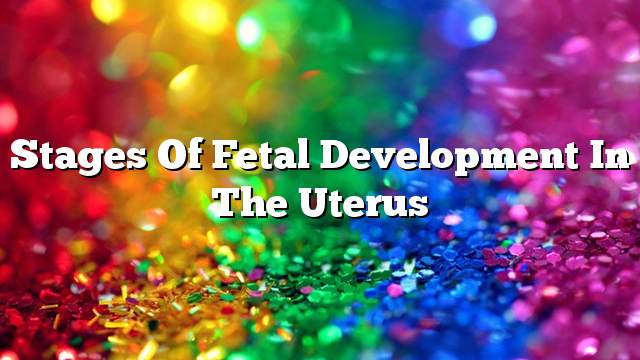The first embryonic stage
In this stage, the child develops and completes the uterus, so that the fetus’s cells, which are called embryonic stem cells, help to complete the child’s entire body. The placenta, which is responsible for transporting food, water and oxygen from the blood to the fetus, And help to get rid of some harmful substances within the body, in addition to the cyst surrounding the fetus, which contains the fluid necessary to protect, and the most prominent developments that occur for the child in the first embryonic stage:
- Nervous system: The brain, spinal cord, and nerves are formed.
- the heart: The heart initially consists, but does not start to throb, only at an advanced stage when the blood forms.
- the face: The eye and ear are formed on both sides of the head and are connected to the brain. Eyelids are formed to protect the eyes, as well as the forehead, nose, cheeks, lips, jaw, nasal passages, mouth, and tooth and tooth buds.
- Hands and legs: The arms and legs start with small buds forming on either side of the embryo, which looks like a small bump shape that later turns into fingers and toes.
- Members: The sexual organs of the child, whose sex is determined at the end of the embryonic stage, begin to form.
- Muscle: The fetus begins to move when the muscles are formed. Initially, the movement is a prick. When the muscles and nerves are connected together, the fetus will actually move.
Second embryonic stage
Among the most important developments that occur to the child at this stage:
- The child’s length is about 7.5 cm.
- The sex of the fetus can be identified at this stage.
- The fetus begins to hear sounds, especially in the 18th week, such as the heartbeat and even the mother’s voice.
- The fetus’s eyes open in the 20th week, but the fetus can only see the third stage.
- The fingers and feet are formed by the middle of the second stage.
- The hair, in addition to white waxy material to protect the skin of the fetus, and also show some fat under the skin.
Third embryonic stage
Among the most important developments that occur to the child at this stage:
- This stage begins in the 27th week until the end of pregnancy, and by this stage all parts and organs of the child are complete and have the ability to work properly.
- The child begins to feel the five senses, so that he can touch, see and hear, as the child can hear his mother and recognize her voice.
- More fat is needed for the baby to get warm after birth, and the skin’s fat fills are filled with fewer wrinkles.
- The baby’s head is fully formed by the end of the third stage, in addition to the growth of hair, eyelashes, and eyebrows.
- The child’s position changes at the end of this stage, so that the head becomes down the uterus.
- The lungs are formed where they are mature and fit for work.
Ultrasound
This method is used to make sure that the pregnancy is progressing normally and to check the date of delivery. It is usually used in week 18-20, which is safe and does not pose a threat to the mother or fetus.
An ultrasound scan is used to ensure that:
- Recording fetal heartbeat.
- Make sure it is one or more embryos.
- Ensure that there are no physical abnormalities in the fetus.
- Check the location of the placenta.
- Check the amount of fluid surrounding the fetus.
- Determining the sex of the child.
- Know the size of the child.
